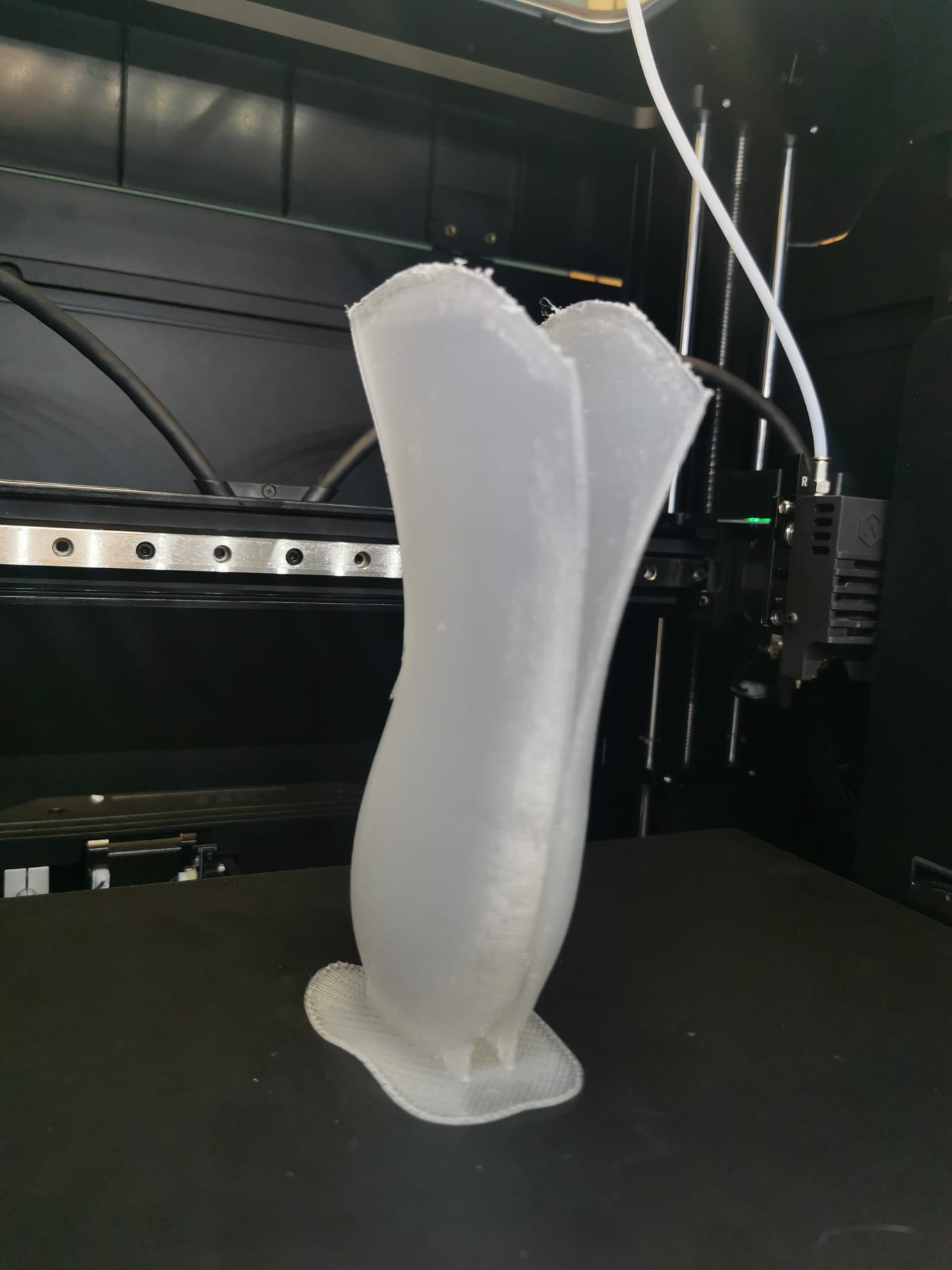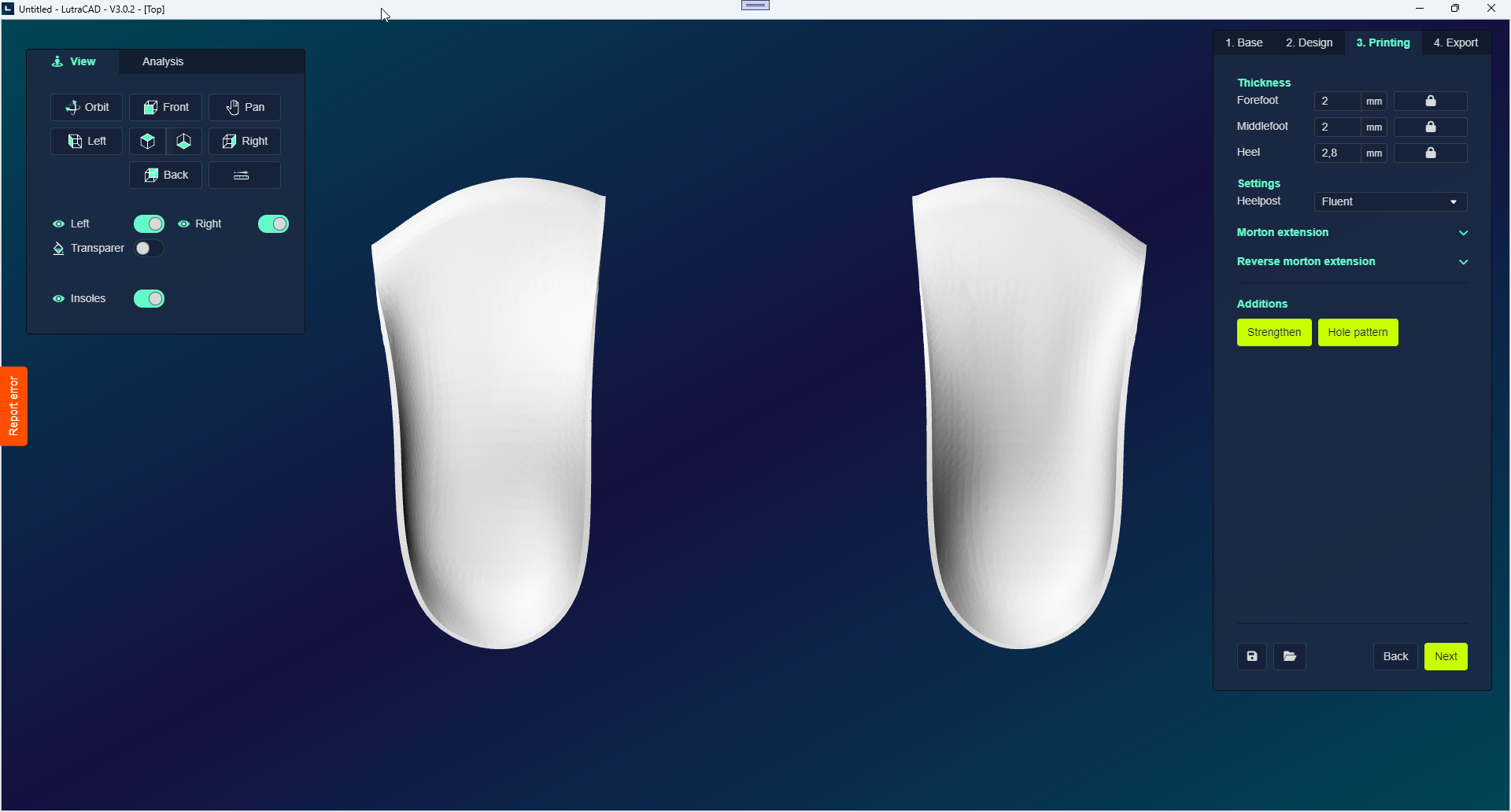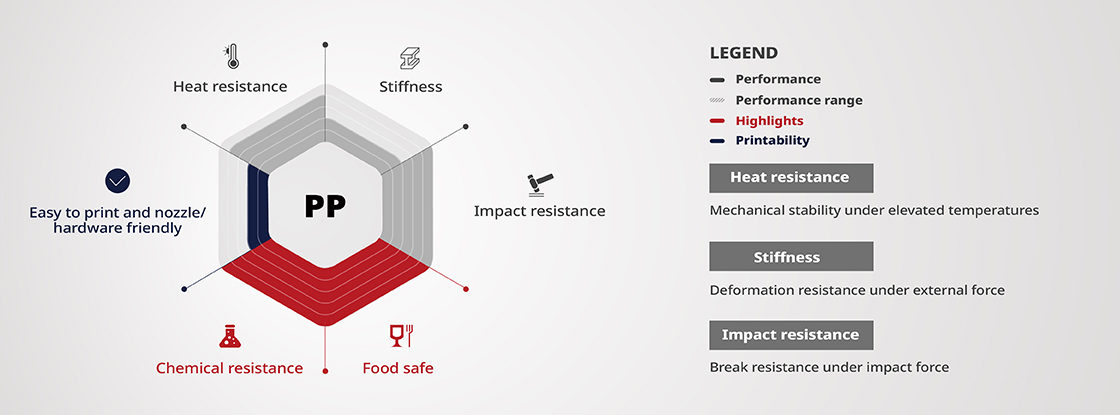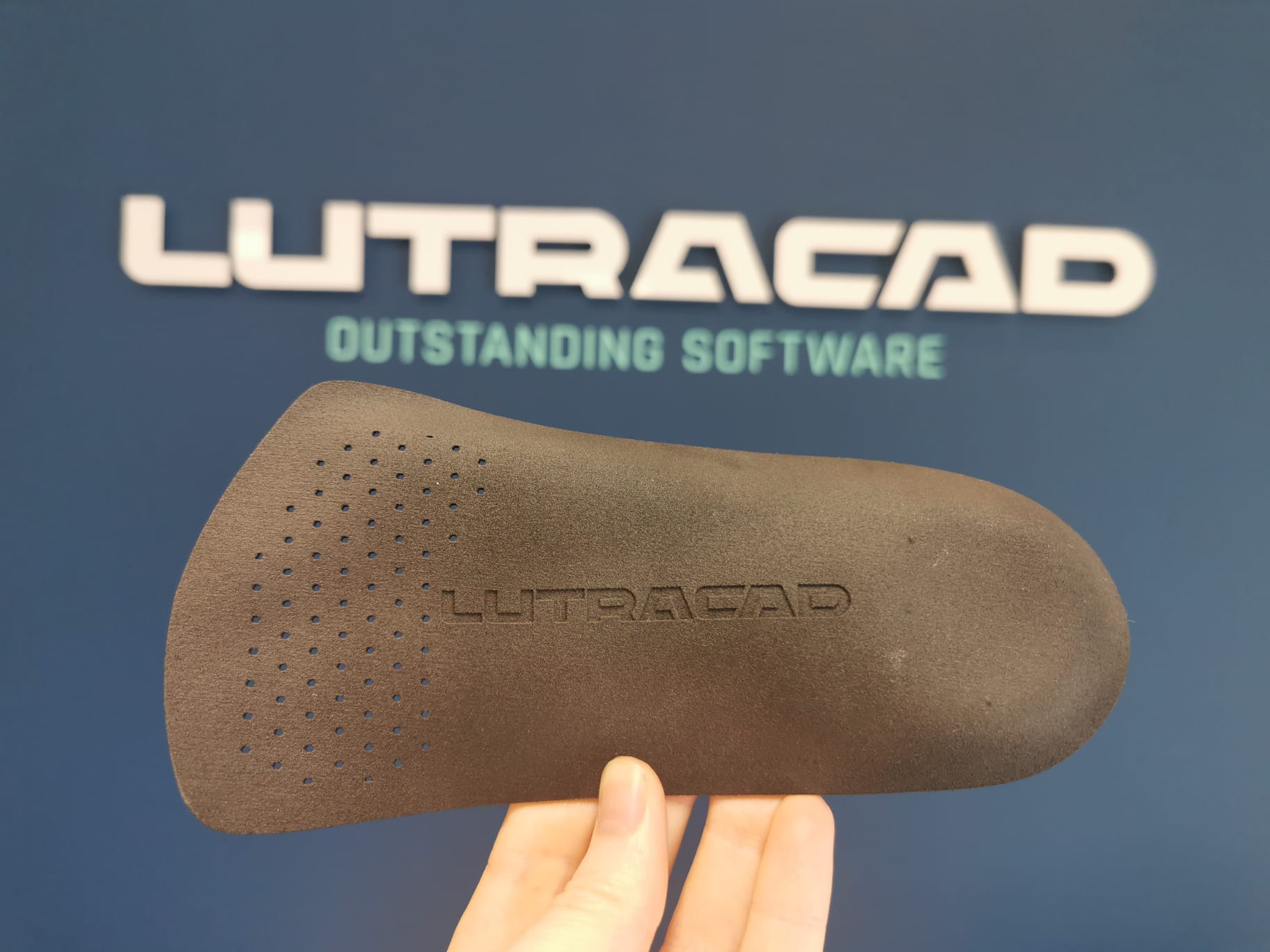As technology continues to advance, the field of orthopedics and podiatry has seen significant advancements in the development of customized insoles. Among the various materials used, polypropylene has emerged as a revolutionary option due to its unique properties and the advent of 3D printing. In this article, we will explore the benefits of 3D printing polypropylene insoles and how they can transform the field of orthopedics and podiatry.

An Optimized Workflow with LutraCAD Software
LutraCAD insole software offers an optimized workflow for 3D printing polypropylene insoles. Its user-friendly interface simplifies the design process, allowing practitioners to easily import foot scans or directly scan with a 3D scanner, design customized insoles, and generate print-ready files. With integrated slicing and sending to printer capabilities, LutraCAD streamlines the entire process, making it accessible to everyone, even without technical knowledge.

The Advantages of Polypropylene Insoles
Polypropylene is a versatile and durable thermoplastic polymer that offers several advantages when used in insole manufacturing. Some of the key benefits include:
- Flexibility: Polypropylene insoles provide excellent flexibility, allowing for natural foot movement and enhanced comfort.
- Lightweight: These insoles are lightweight, reducing the overall burden on the foot and preventing fatigue.
- Moisture Resistance: Polypropylene is inherently water-resistant, making it an ideal choice for individuals with sweaty feet or who engage in physical activities that involve moisture.
- Durability: The material has excellent longevity, ensuring that the insoles can withstand prolonged use without losing their supportive properties.
- Low Warpage and Shrinkage: 3D printed polypropylene insoles exhibit low warpage and shrinkage, ensuring dimensional stability and accurate fit.
- High Layer Adhesion: Printed parts using polypropylene have extremely high layer adhesion, resulting in strong and durable insoles.
- Break Resistance: The combination of low warpage, shrinkage, and high layer adhesion makes 3D printed polypropylene insoles highly break resistant, providing long-lasting support.
- No Drying or Pre-Treatment Required: Unlike some other materials, polypropylene does not need to be dried before 3D printing and can be used without pre-treatment, making the printing process more convenient and efficient.
Material performance for the polypropylene filament:

Material performance for PP, source: https://www.raise3d.com/filaments/pp/
As you can see on the image above, the material is made to be chemical resistant and impact resistant. There are more brands available on the market, see table below for a short list of the most popular brands with price per kg:
| Price per kg | Price per insole (30 g) | |
|---|---|---|
| P-filament 721 (by PPprint) | € 63,61/ $ 59.99 | € 1,91 |
| Ultrafuse® PP (by BASF Forward AM) | € 62,92/ $ 68.74 | € 1,88 |
| Centaur PP (by FormFutura) | € 57,85 / $ 63.20 | € 1,74 |
Advancements in Polypropylene 3D Printing: Beyond Custom Insoles
Traditional manufacturing methods often involve mass production, resulting in generic insoles that may not address the unique needs of each individual. However, with the advent of 3D printing, orthopedics and podiatry can now offer fully customized polypropylene insoles tailored to the specific requirements of each patient.
The process begins with a digital scan or 3D model of the patient's foot, which captures precise measurements and contours. Using specialized software, orthopedic professionals can then design insoles that align with the individual's foot shape, arch type, and any specific foot conditions or abnormalities.
Once the design is finalized, a 3D printer can produce the insoles layer by layer, resulting in a highly accurate and customized end product. The ability to fine-tune and personalize the insoles offers numerous benefits, including improved comfort, enhanced support, and more efficient redistribution of pressure.
Cost-Effectiveness and Efficiency
One of the remarkable advantages of 3D printing polypropylene insoles is the cost-effectiveness and efficiency it brings to the manufacturing process. With the use of this technology, a pair of insoles can be printed for as little as 4 euros in material costs. This affordability makes customized insoles accessible to a wider range of patients.
Reduced Material Waste
Compared to milling, 3D printing minimizes material waste. Milling involves cutting away excess material from a larger block, resulting in significant material wastage. On the other hand, 3D printing adds material layer by layer, using only the necessary amount of material for the insole's structure. This efficiency in material usage not only reduces costs but also aligns with sustainability goals by minimizing waste generation.
Adhesion of Polypropylene and Special Printing Surfaces
Polypropylene does not adhere well to all materials commonly used as printing surfaces in 3D printers. Therefore, it is necessary to use a special printing surface to ensure good adhesion of the material.
One popular option is to use special build plates specifically designed for printing with polypropylene. These build plates, such as the PPprint P-surface 141, are engineered with a surface that promotes strong adhesion between the polypropylene filament and the print bed. The textured surface enhances grip and prevents warping or detachment during the printing process, resulting in successful and reliable prints.
Another effective solution is to use a specialized bed adhesion solution designed specifically for polypropylene, such as Magigoo PP 3D Bed Adhesion Solution or BuildTak Bond for Polypropylene. These adhesives are formulated to provide excellent bonding between the polypropylene print and the print bed surface. By applying a thin layer of the adhesion solution onto the print bed before starting the print, it helps ensure secure adhesion throughout the printing process, minimizing the risk of warping or detachment.
Compliance with MDR
When producing polypropylene insoles for medical purposes, it is crucial to ensure that the material used complies with the Medical Device Regulation (MDR). The MDR sets strict guidelines and standards for the safety and performance of medical devices, including insoles. It is essential to work with materials that meet the necessary regulatory requirements to ensure the insoles are safe and suitable for patient use.
Continual Technological Advancements
3D printing technology is continuously evolving, leading to ongoing advancements in the field of orthopedics and podiatry. As technology progresses, improvements are being made in printing speed, efficiency, and material options. These advancements are enhancing the overall viability and effectiveness of 3D printed insoles, enabling better patient outcomes and expanding the possibilities for customized foot care solutions.
Other Applications: AFOs and More
Aside from insoles, 3D printing with polypropylene has proven to be highly effective in the production of other orthopedic devices. Foil test shoes and Ankle Foot Orthosis (AFO) are such devices that benefits from the advantages of polypropylene and the customization capabilities of 3D printing.

Best Practices for Handling Polypropylene Filament
While polypropylene filament is known for its unique properties, it's important to handle it correctly to ensure the best results in your 3D printing projects. Here are some best practices to consider when working with polypropylene filament:
- Keep in a Sealed Container: Store the polypropylene filament in an airtight container to protect it from dust and potential contaminants.
- Avoid Exposure to Direct Sunlight: Prolonged exposure to sunlight or UV rays can degrade the quality of polypropylene filament. Store it in a cool, dark place away from direct sunlight to maintain its properties.
- Store at Room Temperature: Polypropylene filament should be stored at room temperature, ideally between 20-25°C (68-77°F). Extreme temperature fluctuations can cause warping or degradation of the material.
Additionally, when preparing to 3D print with polypropylene filament, consider the following best practices to achieve optimal results:
- Bed Adhesion: For better bed adhesion, using a brim or raft is highly recommended. This helps secure the print to the bed and prevents warping or detachment during printing.
- Use Special Printing Bed Surface: Consider utilizing a special printing bed surface specifically designed for polypropylene to enhance first layer adhesion.
- Magigoo PP or BuildTak Bond for Adhesion: Another option is to apply Magigoo PP, a specialized adhesive, to the print bed for improved adhesion of the first layer.
- Infill Considerations: To prevent warping caused by polypropylene crystallization, avoid using dense and rectangular infill patterns. Opt for infill patterns that promote even distribution of material and minimize stress accumulation.
By following these general handling and printing best practices, along with using appropriate bed adhesion methods, you can maximize the benefits of polypropylene filament and achieve successful 3D prints for various applications, including orthopedics and beyond.
Exploring Other Materials for 3D Printed Insoles
While polypropylene offers numerous advantages for 3D printed insoles, it is worth exploring other materials as well. Different materials may have unique properties that can address specific patient needs or provide alternative benefits. Some alternative materials that are commonly used for 3D printed insoles include:
- Thermoplastic Elastomers (TPE): TPEs are known for their excellent flexibility, cushioning properties, and resistance to wear and tear.
- Thermoplastic Polyurethane (TPU): TPUs offer a good balance of flexibility, durability, and impact resistance, making them suitable for active individuals.
- Polyethylene Terephthalate Glycol (PETG): PETG is a versatile material with high strength, good flexibility, and excellent chemical resistance.
- Polylactic Acid (PLA): PLA is a biodegradable and bioactive material derived from renewable sources such as cornstarch or sugarcane. It offers good rigidity and is commonly used for prototyping and general-purpose applications.
Each material has its own set of characteristics, such as varying levels of flexibility, durability, cushioning, and moisture resistance. By considering different materials, orthopedic professionals can expand their options for customizing insoles and providing tailored solutions for patients.
Alternative Printing Techniques: SLS/MJF with PA11 and PA12
While 3D printing with polypropylene has its advantages, alternative techniques like Selective Laser Sintering (SLS) and Multi Jet Fusion (MJF) utilize polyamide (PA) materials such as PA11 and PA12 to create durable and flexible orthopedic devices. SLS and MJF offer the ability to produce complex geometries and internal structures, including lattice designs that enhance weight distribution and ventilation. The isotropic nature of SLS and MJF prints ensures consistent mechanical properties in all directions, ideal for load-bearing applications. These techniques also provide post-processing options like dyeing and smoothing for improved aesthetics and patient comfort. By considering alternatives like SLS and MJF with PA11 and PA12, orthopedic professionals can expand their options for customized orthopedic solutions.

Conclusion
The combination of 3D printing technology and polypropylene, along with other materials, has revolutionized the field of orthopedics and podiatry. The ability to create fully customized insoles offers improved comfort, support, and treatment options for individuals with various foot conditions. Moreover, the cost-effectiveness, efficiency, and reduced material waste of 3D printing allow for affordable, sustainable, and rapid production, ensuring that more patients can benefit from this innovative solution. By exploring different materials, orthopedic professionals can further enhance the customization options for 3D printed insoles and provide tailored solutions that meet specific patient needs. Embracing 3D printed insoles and staying at the forefront of technological advancements can provide long-term benefits for both patients and healthcare professionals.





